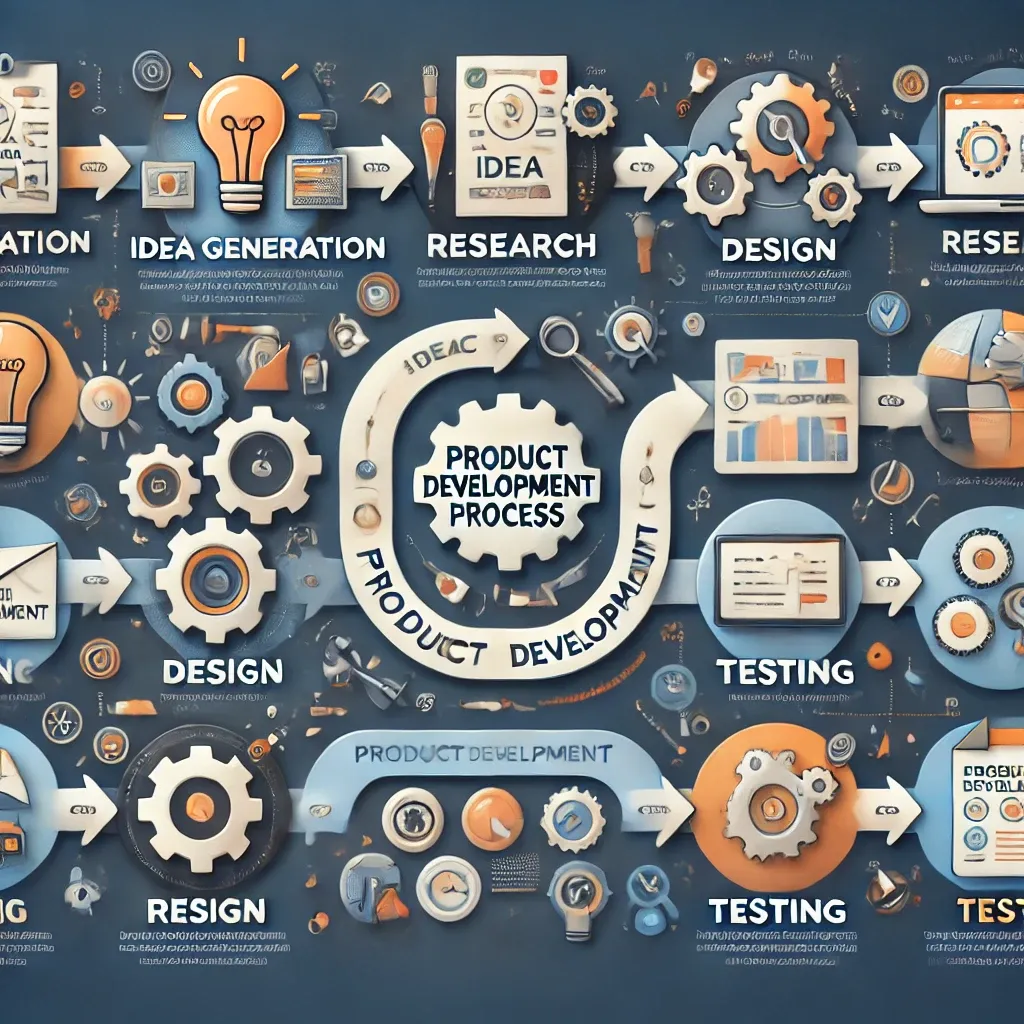Product Development Process

Creating a successful product isn’t just about having a great idea—it’s about turning that idea into something tangible that solves real problems for your customers. Whether you’re starting a new business or refining an existing one, understanding the intricacies of product design can make all the difference. This guide will walk you through the foundational steps of product development, helping you craft solutions that resonate with your market and set your business apart.
The article is divided into three parts:
- What? What is product designing?
- Why? Why is product designing important?
- How? How to design the product for business?
When starting a business, it's easy to get caught up in the operational details. However, taking the time to design your product properly can significantly enhance your chances of success. Below, we outline the key aspects of this process.
1. Market Research
Understanding the Market
Market research is essential to gain a thorough understanding of your customers and the ecosystem within which your business operates. Identifying stakeholders is a critical first step.
For example:
- Grocery Store: Stakeholders include distributors (who supply goods), landlords (if renting a space), and customers in the local area.
- Restaurant: Stakeholders are chefs, suppliers, and customers who consume your food.
Engaging with Stakeholders
Begin by actively engaging with your stakeholders to understand their needs and challenges.
Example 1: Starting a grocery store:
- Meet distributors to learn about product availability and payment terms.
- Speak to local store staff to understand their operational challenges.
- Talk to customers to identify their preferences, such as delivery options or product variety.
Example 2: Starting a restaurant:
- Consult chefs about ingredient sourcing and menu planning.
- Interact with existing restaurant owners to gather insights on operational efficiency.
- Seek feedback from potential customers on cuisine preferences.
By thoroughly engaging with stakeholders, you can uncover valuable insights that inform your product design.
2. Product Design
Customising Solutions for Stakeholders
Designing a product involves tailoring your offerings to meet the specific needs of your stakeholders.
For example:
- A grocery store can differentiate itself by offering delivery services and a wide variety of products.
- Distributors might prefer timely payments and support with slow-moving inventory.
By addressing these needs, your store can establish a reputation for reliability and customer satisfaction.
Iterative Design and Prototyping
- Test your product design through small-scale implementation.
- Gather feedback from stakeholders and refine your approach.
- Use data-driven insights to adapt and improve continuously.
Real-World Example: A successful company might start with a single service offering (e.g., home cleaning) and gradually expand into complementary services based on customer demand and operational capacity.
3. Building a Common Platform
Solving Stakeholder Problems
Identifying and addressing the challenges faced by all stakeholders creates a strong foundation for your business.
Example: In the hospitality sector, key stakeholders include property owners, operational staff, and guests. Building a common platform that simplifies bookings, ensures cleanliness, and offers transparent revenue reporting can enhance satisfaction for all parties.
Leveraging Technology
Technology can play a pivotal role in unifying stakeholder needs. For example:
- An app for grocery stores could provide customers with delivery updates and product availability while allowing distributors to track payment statuses.
- Restaurants could use online ordering systems to streamline operations and provide insights into popular menu items.
Key Takeaways
- Identify Stakeholders: Map out everyone involved in your business ecosystem and their specific needs.
- Conduct Research: Invest time in understanding the challenges and preferences of your stakeholders.
- Iterate and Adapt: Use feedback to refine your product and processes continuously.
- Build a Common Platform: Provide a unified solution that addresses the core needs of your stakeholders.
- Leverage Technology: Use tools and systems to streamline operations and improve user experience.
By following these steps, your business can effectively design a product that meets market demands and positions itself for sustainable growth.
